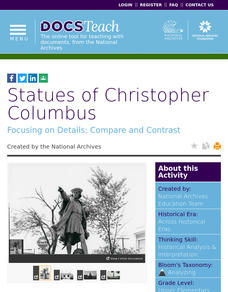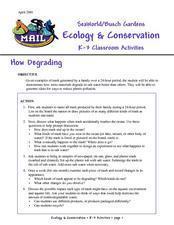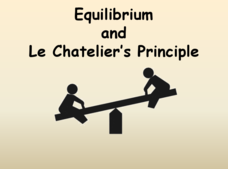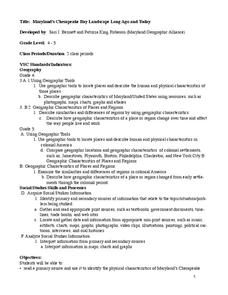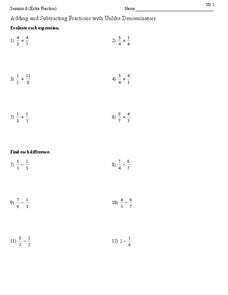Teaching Tolerance
Critiquing Hate Crimes Legislation
The high school lesson explores what hate crimes are and how the government has responded to those crimes. Academics read legislation, analyze political cartoons, and complete hands-on-activities to understand what motivates individuals...
Teaching Tolerance
Introducing 'The New Jim Crow'
When Jim Crow Laws ended, the intent behind them did not. Academics read "The New Jim Crow Laws" and an interview from the author to understand how racism has not ended, but rather changed over time. The lesson explains how prejudices in...
Tean Truth
Who Do You Admire and Why?
A five-question worksheet asks learners to consider who they admire, the qualities this person has that they admire, and why they find these characteristics admirable. To conclude, pupils select three of the qualities they admire in...
Digital Public Library of America
A Raisin in the Sun by Lorraine Hansberry
A set of 14 primary sources provides background for a study of Lorraine Hansberry's drama, A Raisin in the Sun. Featured are images from stage productions of the play, white supremacy protests, a clip from a television interview, and...
Nemours KidsHealth
STDs: Grades 9-12
After gathering information about Sexually Transmitted Diseases (STDs), high schoolers engage in two activities designed to educate themselves and others. They begin by using what they have learned to write a speech for a friend who...
DocsTeach
Statues of Christopher Columbus
Scholars compare statues of Columbus and discuss how each memorial captures his personality. Academics also complete a worksheet and discuss how some people have called to remove statues honoring Columbus.
Anti-Defamation League
Who is Malala Yousafzai?
Malala Yousafzai may be young, but she's mighty! Young scholars listen to a short lecture about Malala's background, read an article about her winning the Novel Peace Prize, and meet in groups to discuss statements she has made. Class...
Facing History and Ourselves
Bio-poem: Connecting Identity and Poetry
Writing a bio-poem is a great way to have young scholars go below the surface and reflect on who or what has made them who they are. Check out this richly detailed lesson that provides step-by-step directions for crafting a bio-poem.
SeaWorld
Ecology & Conservation
How much trash does an average family produce in 24 hours? Where does that trash end up? Get your youngsters thinking about ecology and conservation as they discuss the impact pollution has on the marine environment. After a deep...
Curated OER
You Have Egg On Your Face
Students explore and analyze how the human face is proportioned and explore ways artists use mathematics to make art. They demonstrate the basic face proportions by creating a reference sketch and illustrating visual clues to communicate...
Curated OER
It Has Been Rubbish For Years
Young scholars are presented with the problems of percentages and focus upon numbers in contrast to 100. They calculate problems with money and are engaged with the use of games as a teaching tool. Students also interpret data as...
Teach Engineering
Stormy Skies
Young meteorologists examine the four main types of weather fronts and how they appear on a weather map. Participants learn about the difference between the types of weather fronts along with their distinguishing features. A...
Curated OER
History of Modern Cuba
Set the context for the often-strained relationship between the US and Cuba with this informative and entertaining presentation. From political cartoons to photographs of Fidel Castro and Fulgencio Batista, as well as heartbreaking...
Science Geek
Equilibrium and Le Chatelier's Principle
Time to shake up the status quo with a presentation that describes Le Chatlier's Principle and has pupils examine situations in which equilibrium is upset. Four examples show different stresses to the reaction and the resulting shift.
Curated OER
Maryland’s Chesapeake Bay Landscape Long Ago and Today
Combine a fantastic review of primary source analysis with a study of Captain John Smith's influence on the Chesapeake Bay region in the seventeenth century. Your young historians will use images, a primary source excerpt, and maps...
American Farm Bureau Foundation for Agriculture
Welcome to My American Farm!
Take a step into the virtual farm world and explore the impact farming has on our everyday eating habits. Future farmers discover the meaning of agriculture and the hard work that goes into providing food for us to enjoy. A computer...
Scholastic
Study Jams! Finding a Fraction of a Set
Finding a fraction of a number is just multiplication in disguise. Young mathematicians can interact with this lesson to practice using multiplication to find a percent of a whole number. The narrator goes over how to put the number over...
Film English
Stand Up
To stand up can have many different meanings. Examine the different usages in English and relate one of these meanings to a short film about homophobic bullying. Class members view and discuss the film as well as a short reading passage...
Springfield Public Schools District 186
Adding and Subtracting Fractions with Unlike Denominators
Fractions are your learners' best friend in this simple worksheet that has room to show work as learners practice adding and subtracting fractions with unlike denominators.
Seussville
Hats off to Dr. Seuss Hat Toss
Focus on Dr. Seuss's cat's iconic hat with a crafty activity. Kids make their own red-and-white-striped hat and then toss paper balls into the hat. See who has the best aim! Additional Cat in the Hat materials are included.
Twisty Noodle
Draw the Items—On, Under, Front, Behind Book
Practice prepositions with a drawing activity. The little book has four images of a table paired with prompts. Learners draw items around the table based on the prepositions used in the sentences.
The New York Times
Great Debate: Developing Argumentation Skills
"Advertising has no impact on whether people buy something." "Looting is morally permissible during national disasters and emergencies." "Gay teenagers should be allowed to take dates to the prom." Considering a class debate? Check out...
Student Handouts
Coat of Arms
What would be on your family's coat of arms? Complete a template with the images that represent your family. Decorate the coat of arms and display in your classroom after your class has finished.
Student Handouts
Substitute Teaching Log Sheet
Useful for substitute teachers or administration, a log sheet tracks the date, hours, and school where a substitute teacher has worked. There are also spaces to note which teacher he or she was subbing for, and any relevant notes...
Other popular searches
- 1st Grade Grammar Has/have
- Helping Verbs Have Has
- Has and Have
- I Have Who Has
- I Have Who Has Game
- Using Has and Have
- Has Have
- Have To/has To
- Verbs Has and Have
- Have Got Has Got
- Have Has Had
- Language Has and Have





